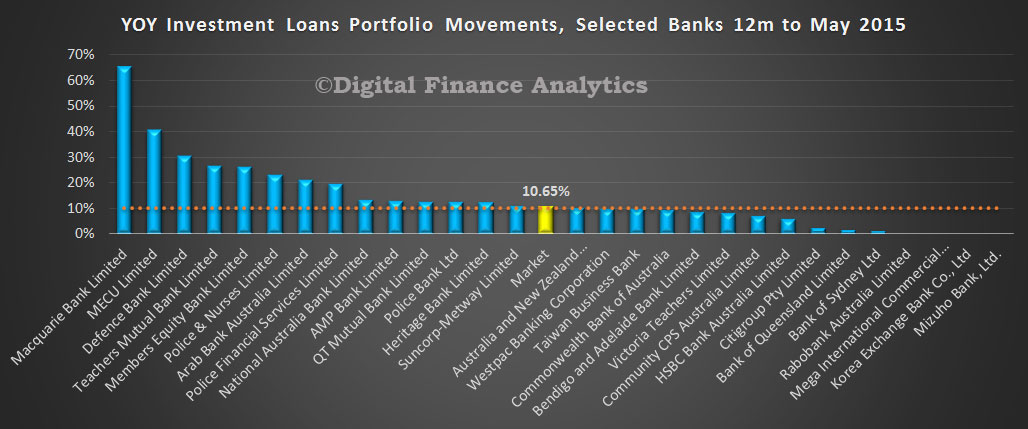As we foreshadowed, the banks are beginning to tweak their mortgage strategies in response to the 10% cap in investment loans, and in a drive to re-balance towards owner-occupied borrowers.
ANZ today announced interest rates for residential investment property loans will increase to manage investor lending growth targets and in response to changing market conditions. There is no change to other variable lending rates including the Standard Variable Rate for owner-occupied home loans or for business lending. Fixed rates for new owner-occupied home lending will be reduced by up to 0.40%.
Effective Monday, 10 August 2015, ANZ’s variable Residential Investment Property Loan (RIPL) Index Rate will rise by 0.27% to 5.65%pa (5.76%pa comparison rate). Fixed rates for new Residential Investment Lending will also increase by up to 0.30%.
ANZ CEO Australia Mark Whelan said: “Although interest rates for residential property investors are at very low levels historically, the decision to raise interest rates for residential investment lending has been difficult but necessary in the current environment. “It allows us to balance the mix of our lending between owner-occupied and investment lending as well as the impact of changing market conditions. This includes a decision to cut fixed rates for new owner-occupied home lending. “This is a considered decision that takes into account our customers’ position and the criteria we look at when setting rates including our competitive position, our regulatory obligations and the state of the residential property market,” Mr Whelan said. ANZ has also introduced a series of other measures recently to improve the mix between investor and owner occupied lending. For residential investment lending, these include reducing interest rate discounts, increasing the deposit required to at least 10% and increasing interest rate sensitivity buffers.
Those who are above APRA’s 10% guidance will be dialing investment loans down and turning to owner occupied loans to bolster their mortgage portfolio growth. On the other hand, those below the 10% threshold seem to be seeing an opportunity to grow their investment portfolio as others pull back. Non-banks are also joining in. Banks who are well above the 10% annual target will of course have to write smaller numbers of loans in the second half to balance out the full year.
 The other factor in play are the capital changes APRA announced this week, from 16% to 25% for IRB banks by July 2016. ANZ’s approach of applying the lift in investment loan rates to its entire variable portfolio indicates their strategy is designed to take account of the capital allocation changes ahead. It will be interesting to see if other banks follow suit and we see investment loans repriced across the market. We think this is a likely outcome.
The other factor in play are the capital changes APRA announced this week, from 16% to 25% for IRB banks by July 2016. ANZ’s approach of applying the lift in investment loan rates to its entire variable portfolio indicates their strategy is designed to take account of the capital allocation changes ahead. It will be interesting to see if other banks follow suit and we see investment loans repriced across the market. We think this is a likely outcome.

3 thoughts on “ANZ Re-balances Mortgage Pricing”